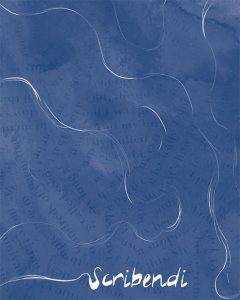
Submissions are due TODAY!
You have toiled over your pieces. You have worked long and hard to polish your submissions. You have turned them into Scribendi. And then what? Now you wait. But what happens between the submission deadline and the acceptance emails? In that long space between October 13th and February what happens? What is taking so much time? Where does your precious work go? Who looks at it? How is it judged? Who makes the cut?
After you submit your work it has to be looked at or read by every single Scribendi student staff member, which means each individual staff must look at hundreds of submissions. Then the works are debated and voted on in a complicated back and forth process of debating, voting, defending, and re-voting. This means some works are looked at repeatedly to narrow it down.
But how does the staff pick which pieces will be published? Each category has different standards for what makes a work good and high quality. There are two elements to consider: content and technical skill. The standards for technical skill are similar to what you might learn in English and art classes. Despite this, a good work goes beyond just technical skill; it needs to have interesting content. It is harder to say what the staff looks at for content because content is such a subjective area. Generally, though, cliché topics done in a cliché way does not make for interesting content. Vague language attempting to be esoteric does not make for interesting content. Pieces should be thought provoking and unexpected. Keep in mind, with all of these guidelines, it is just a general rule, it does not mean that good submissions must have these elements, it just means that these elements are helpful, but there are certainly rule breaker exceptions to everything.
For poetry, it must have an interesting sound when it is read aloud because, despite being printed on a page, poetry is really an oral art and is meant to be experienced through sound. The staff is looking for strong, concrete images that the listener can understand. Language must be concise because of the limited space for poetry, short fiction, and creative nonfiction. For prose, a narrative, a concept, or a main idea should be conveyed. However, this does not mean that every prose piece must be a story with narrative and characters. Prose can be more abstract than that, but it needs a unifying theme to tie the work together. It needs to be saying something and that must be clear to the reader when they read it. Correct grammar, spelling, and structure are important; those are rules only to be broken intentionally and obviously. For visual art and photography, creativity with subject, content, and medium are welcomed. Again, it should have a message or content that it is conveying. The choices in the art, meaning the colors, composition, contrast, subject, background, and medium must be intentional. Each choice must have a reason behind it that lends to the message the piece is trying to convey. This is vague, but it just means thinking about the work carefully while you make it. For open media, the criteria are the same as far as strong message and content, but the technical standards very depending on what type of open media. From video to musical composition to architecture, how the staff judges it vary widely, but the general guidelines of the importance of concept and of intentional artistic choices are the most helpful advice for such a wide category.
Hopefully, this gives some insight into the minds of Scribendi staff and will calm your nerves as you all wait to hear back about your submissions! Keep creating.